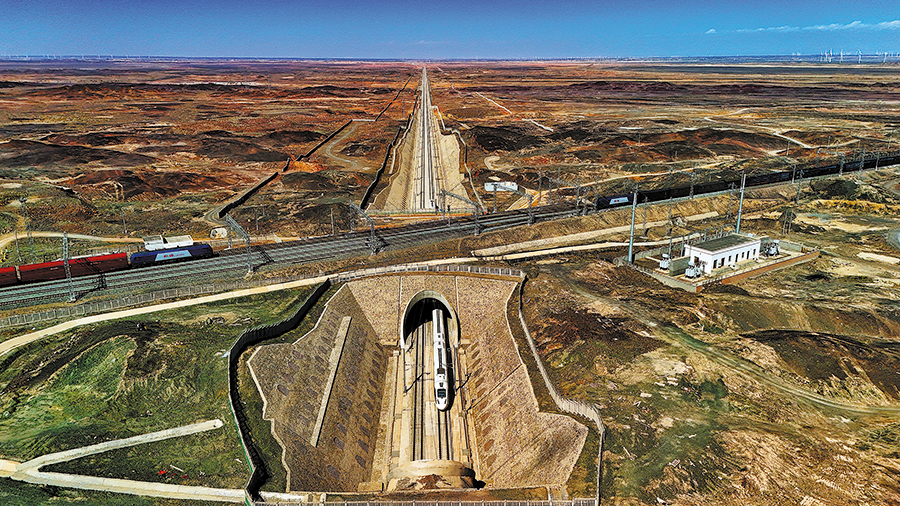
A high-speed train in Lanzhou-Urumqi High-speed Railway passes through an underpass as two freight trains cross overhead near Jingxia Station, Sept 24, 2024.[Photo by Bai Fengliang/For China Daily]
As trains thunder across the tracks like streaks of lightning, few pause to think of the silent sentinels safeguarding Xinjiang Uygur autonomous region's 9,525.68 kilometres of railway — much of it cutting through the barren Gobi Desert. Braving sandstorms and searing heat, railway workers toil day and night, lighting lamps against the wind, and inspecting every inch of rail to ensure safe, smooth journeys. What once relied on ropes and muscle has evolved into a force of mechanised maintenance — sweat and steel forging a modern Silk Road across the wilderness.
Since the founding of the People's Republic of China, railways in Xinjiang have advanced rapidly — from a single trunk line to a vast network spanning the Lanzhou-Xinjiang Railway, the Southern Xinjiang Railway, and now high-speed rail. By late 2024, the region's operating mileage had nearly doubled from 4,914.2 km in 2012 to 9,525.68 km — a 93.84 percent increase. High-speed rail, once absent, now covers 845.37 km.
Xinjiang is now home to the world's first desert railway loop around the Tarim Basin and a northern loop encircling the Junggar Basin. A new network pattern has emerged: "three outbound corridors" (Lanzhou-Xinjiang, Linhe-Hami, Golmud-Korla), "two loops" (northern and southern Xinjiang), and "two international gateways" (Alataw Pass and Horgos Port).
The railway now spans north and south of the Tianshan Mountains, reaching over 80 percent of Xinjiang's county-level regions. It has become a vital artery for ethnic unity, regional development, and broader connectivity under Belt and Road Initiative.

Two Fuxing bullet trains pass each other on the Jinghe-Yining-Horgos Railway, Jan 8, 2020.[Photo by Bai Fengliang/For China Daily]
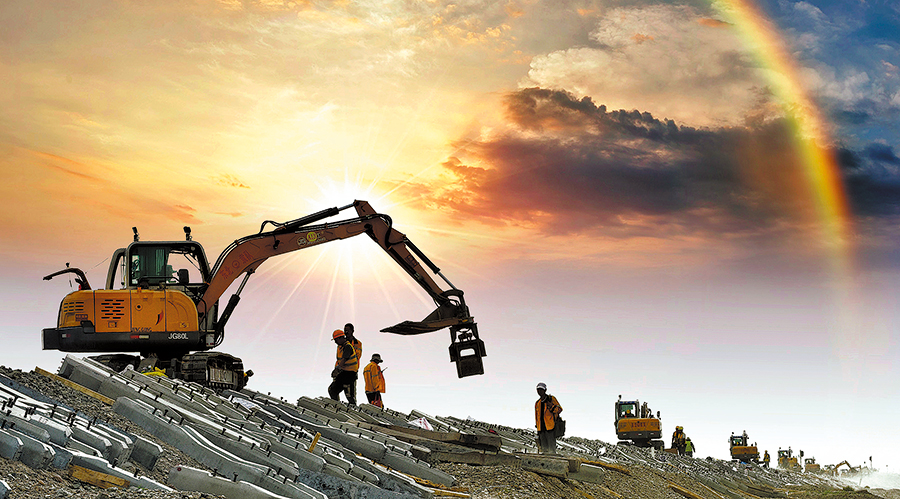
Workers press ahead with the Kuqa-Aksu line expansion project, July 18, 2019.[Photo by Bai Fengliang/For China Daily]
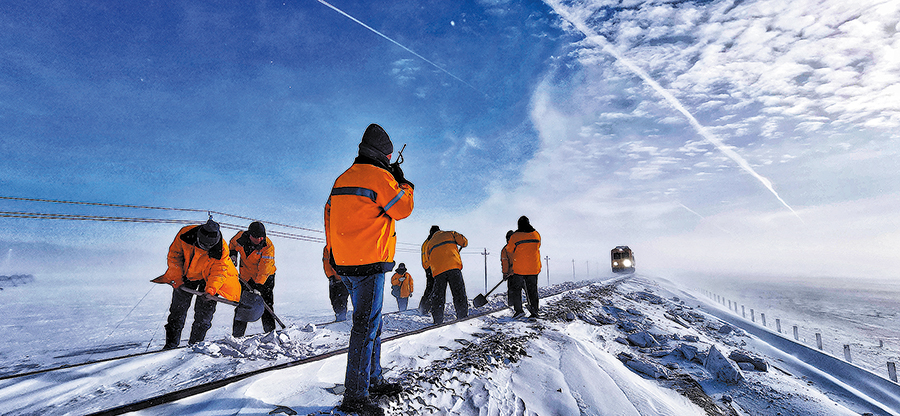
Track workers assist the "Bumblebee" snowplough to clear wind-blown snow near Tiechanggou Station, Jan 19, 2020.[Photo by Bai Fengliang/For China Daily]
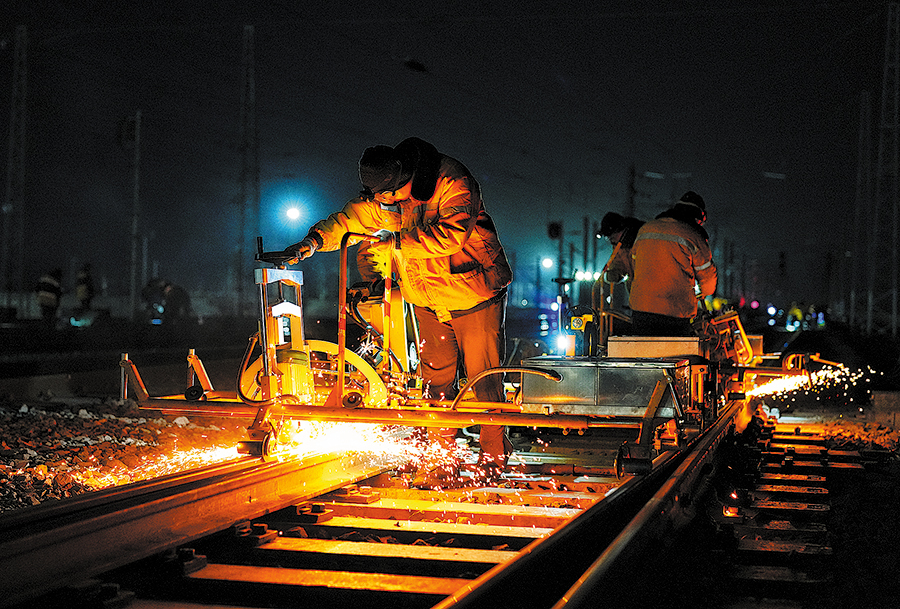
Rail grinding in progress at Hami East Station, Feb 19, 2025.[Photo by Bai Fengliang/For China Daily]
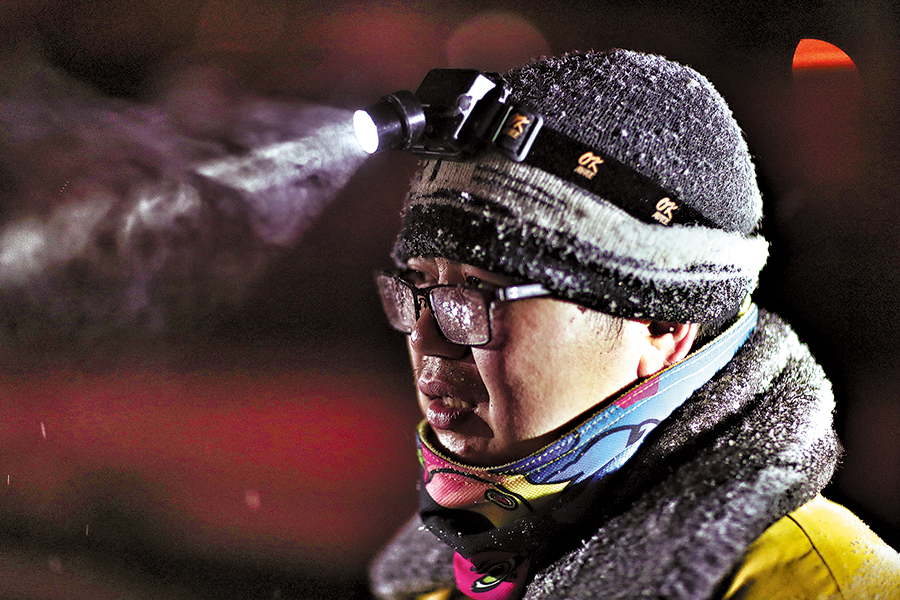
Railway workers operate overnight in heavy snow at Urumqi Railway Station, Dec 5, 2018.[Photo by Bai Fengliang/For China Daily]
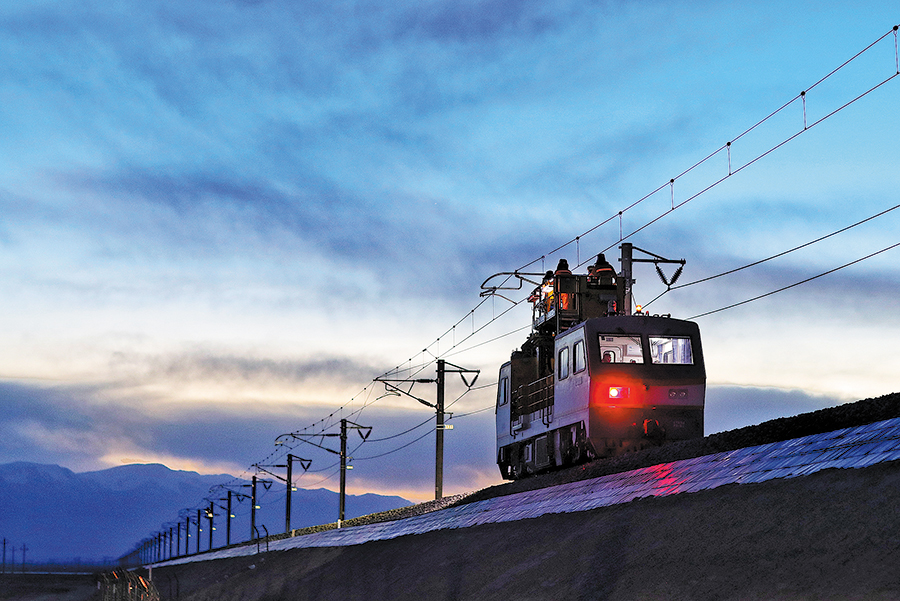
An overhead maintenance vehicle is on duty along the Golmud-Korla Railway, Jan 8, 2021.[Photo by Bai Fengliang/For China Daily]
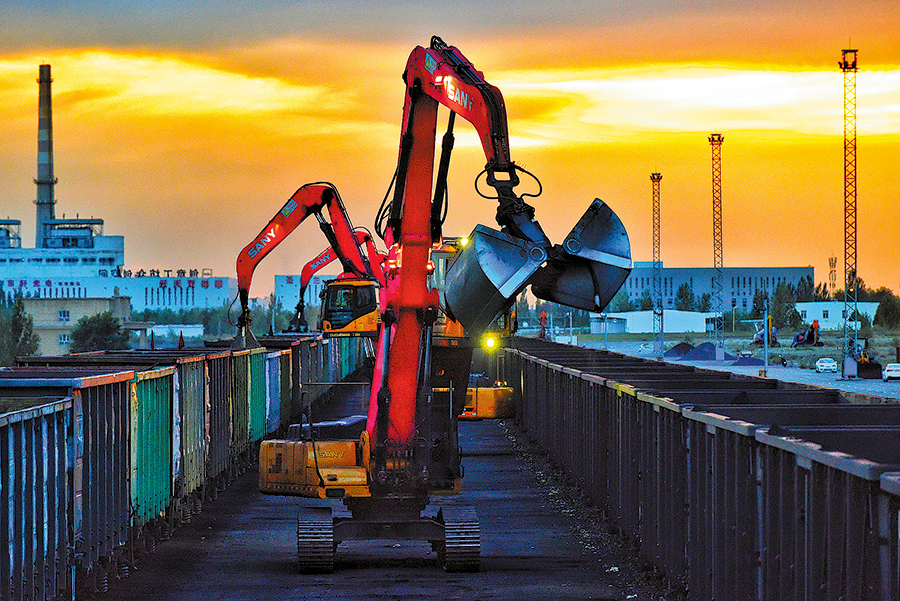
Material handlers load freight containers at Horgos Station, Sept 6, 2023.[Photo by Bai Fengliang/For China Daily]
 Editor:Qiu Xiaochen
Editor:Qiu Xiaochen